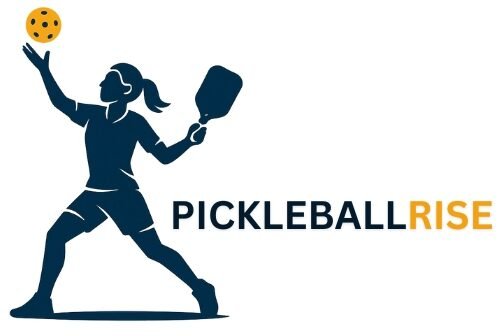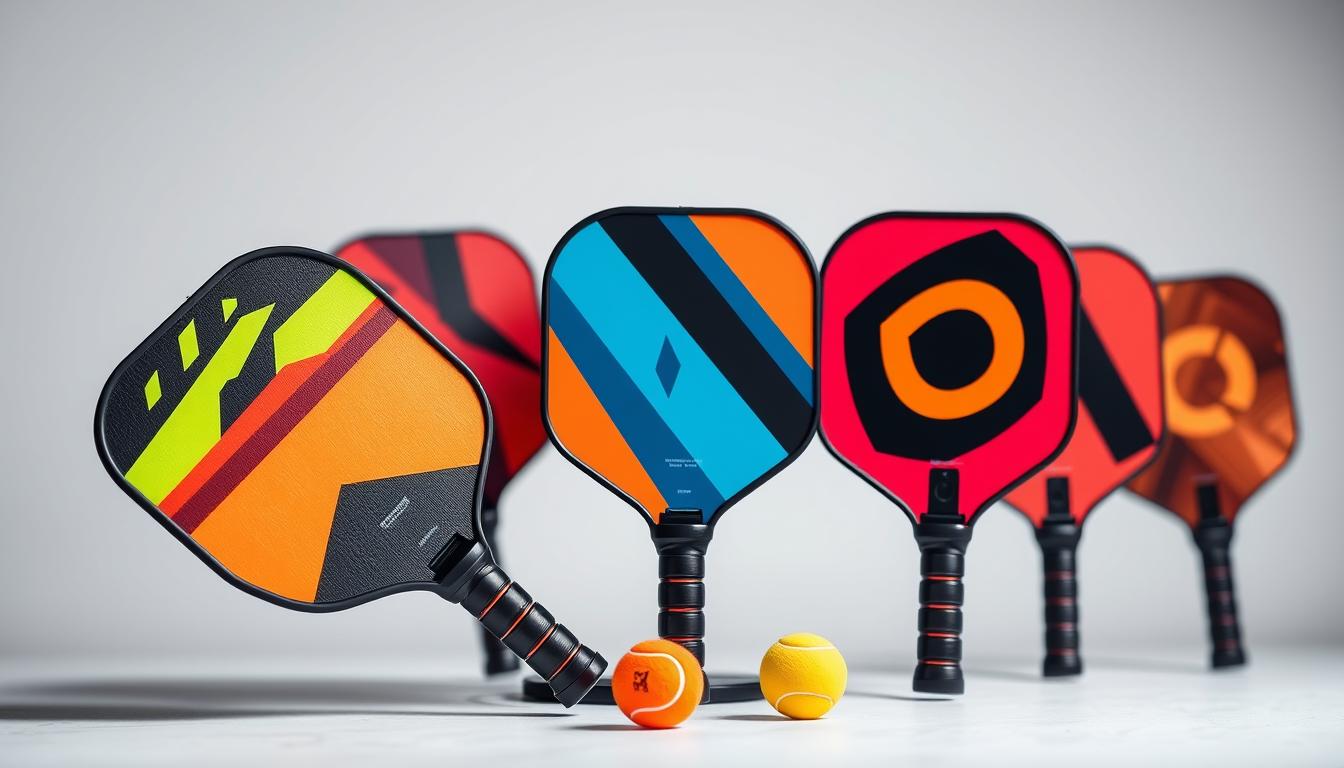What Are the Best Pickleball Paddles for Beginners?
Pickleball paddles for beginners can make or break your first experience on the court. Do you remember your first game? The sound of the ball, the energy of the players, and that moment when your paddle didn’t quite feel right. Choosing the right paddle early on helps you improve faster and play with confidence.
This guide explores the best pickleball paddles for beginners — affordable, forgiving, and easy to handle. After testing over 200 paddles, experts found that many budget options lack comfort and control.
We’ll help you avoid ultra-cheap paddles and overpriced pro gear. Instead, you’ll find balanced, beginner-friendly paddles that help you build consistency and technique.
Models like the Friday Original and 11SIX24 Pegasus Jelly Bean are great starting points. You’ll also learn about paddle anatomy, grip comfort, and buying tips — all designed to help you choose the perfect paddle for your first season.
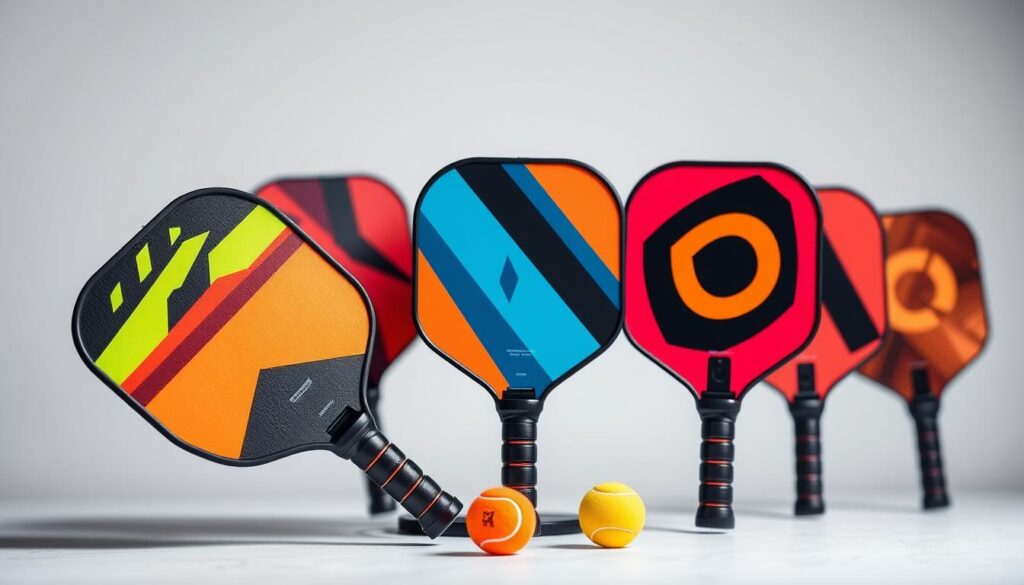
Why choosing the right paddle matters for new players
Choosing your first paddle is key to improving fast. The right tool makes practice rewarding. The wrong paddle can make simple drills frustrating.
When you pick a paddle carefully, you make steady progress. This is better than short-term thrills.
How the wrong paddle creates early frustration
Thin cores and stiff faces make returns sail past the baseline. This can punish you for small timing mistakes. Paddles for power often have more weight, making bad strokes worse.
Textured faces promise spin but feel stiff and unforgiving. Chasing spin too early slows your learning. You end up practicing with inconsistent hits instead of solid control.
Unpredictable dwell and bounce from the wrong paddle make learning harder.
What you should expect from a beginner paddle
Your first paddle should be forgiving and predictable. Look for a large sweet spot and a soft core. This makes learning dinks, volleys, and resets easier.
Comfort is key. Choose a grip that fits your hand and a paddle that’s not too heavy. Durable construction means you won’t need to replace it often. A budget of $90 to $150 gets you the best beginner paddles.
Think of your paddle as a training partner. It should make learning easier, not highlight every mistake. The right paddle helps you build reliable contact and confidence on court.
| Issue | Wrong Paddle Effect | Beginner-Friendly Feature |
|---|---|---|
| Thin core / stiff face | Excessive pop; lost control on soft shots | Moderate core with predictable dwell |
| High swing weight | Punishes timing errors; more pop-ups | Balanced weight for smooth swings |
| Textured, firm face | Less forgiving; encourages early spin chasing | Subtle texture with forgiving surface |
| Small sweet spot | Frequent mishits; slower skill growth | Large sweet spot for forgiveness |
| Poor grip fit | Hand fatigue; inconsistent grip pressure | Comfortable circumference and tack |
| Low durability | Short lifespan; wasted money | Sturdy build within $90–$150 range |
Understanding paddle anatomy and beginner-friendly specs
Before you start shopping, learn about paddle anatomy. Knowing about cores, faces, weight, balance, and swing weight helps you find the right paddle. This guide will help new players understand these terms.
Core types: foam, polymer, and nomex
Foam cores are becoming popular. Brands like CRBN use dense foam for better forgiveness and spin. Foam paddles have larger sweet spots and last longer.
Polymer cores, often made of polypropylene, are found in many midrange paddles. They offer a balanced feel and are affordable. This is great for beginners as they improve their strokes.
Nomex cores are older and stiffer, giving high pop and pace. But, they are less forgiving on mishits. Beginners should avoid nomex for better control and learning.
Face materials and texture
Carbon fiber faces are stiff, durable, and spin-friendly. They feel firmer and reward precise contact. Fiberglass faces are softer and better for quick volleys at the kitchen.
Textured or gritty faces increase spin. Some paddles have rough finishes for more spin. While spin is useful, it’s not as important as learning basic placement and timing for beginners.
Weight, balance, and swing weight explained
Weight affects fatigue and reaction. Beginners should choose lighter-to-midweight paddles. This keeps hands quick and wrists fresh during long play.
Balance changes how a paddle feels. Head-heavy paddles add power but increase swing weight. Head-light paddles speed up your hands and make net play easier.
Swing weight measures how heavy a paddle feels in motion. Low swing weight is good for fast exchanges at the kitchen. High swing weight rewards perfect timing but magnifies errors on off-center hits.
| Feature | What it feels like | Beginner-friendly choice | Why it matters |
|---|---|---|---|
| Foam core | Plush, forgiving, larger sweet spot | Preferred | Helps consistency and touch during learning |
| Polymer core | Balanced, predictable | Good option | Affordable and versatile for all-around play |
| Nomex core | Stiff, punchy, less forgiving | Not recommended | High pace can penalize timing mistakes |
| Carbon face | Stiff, spin-friendly | Use with forgiving core | Offers durability and spin potential as skills grow |
| Fiberglass face | Softer, more touch | Excellent for beginners | Easier feel for volleys and dinks |
| Light weight | Fast hands, less fatigue | Recommended | Improves reaction in the kitchen and during rallies |
| Low swing weight | Quick to swing, forgiving in exchanges | Recommended | Helps you develop control and timing |
When choosing, look for paddles that are forgiving and have predictable bounce. Use this guide to compare different models. This will help you find the best beginner pickleball paddles.
Common buying mistakes beginners make and how to avoid them
Choosing your first paddle is key to learning fast and having fun. Many beginners make mistakes that slow them down. Here’s a quick guide to help you avoid these errors and make a smart choice.
Focus on the basics before looking for fancy features. Paddles that promise power or spin often have thin cores and stiff faces. These can make your game harder if you’re not perfect.
Start with a paddle that’s forgiving and easy to control. This will help you build a solid foundation.
Avoid buying for power or spin first
It’s tempting to go for paddles that promise a lot. But, they might not be right for beginners. Textured faces can be tough on your game if you’re not used to them.
Instead, look for a paddle that’s consistent. This will help you improve your strokes.
Don’t copy pro gear or follow friends blindly
Pros use special paddles that might not be right for you. Their gear is often customized for their unique skills. Trying a friend’s paddle can be helpful, but it’s not a one-size-fits-all solution.
Steer clear of ultra-cheap or blindly expensive options
Very cheap paddles often don’t last long and can mess up your game. On the other hand, spending too much on a paddle too early is not worth it. You won’t notice the difference until you’re more advanced.
Look for paddles in the $90–$150 range. These are durable and offer good performance for beginners.
Another mistake is switching paddles too often. Each paddle takes time to get used to. Stick with one to improve your skills.
| Common mistake | Why it hurts | Smart alternative |
|---|---|---|
| Buying for power or spin | Thin cores and stiff faces punish timing and enlarge errors | Choose a forgiving paddle with a mid-density core and predictable face |
| Copying pro gear or friends | Pro setups are customized and may not match your swing or grip | Demo paddles and pick one that feels comfortable for your play style |
| Buying ultra-cheap models | Poor materials, fake textures, bad balance, quick wear | Invest in reputable brands in the mid-price range for durability |
| Overspending on premium paddles | Small gains are hard to detect for beginners | Wait until your technique improves before upgrading to high-end gear |
| Changing paddles too often | Prevents development of consistent mechanics | Commit to one well-chosen paddle long enough to develop your game |
Best beginner pickleball paddles: criteria for selecting top picks
When looking for the best beginner pickleball paddles, focus on a few key things. Look for forgiveness, comfort, and lasting value. These help you learn faster and enjoy playing more.
Forgiveness is important because new players often hit the ball off-center. A big sweet spot means fewer mistakes and better control. Models with foam cores or wide shapes are usually more forgiving.
How the paddle feels in your hand is crucial. Make sure the grip fits right and the handle is the right length. A good grip reduces hand fatigue and lets you hit precise shots.
Durability is key for long-term use. Choose paddles from brands like Selkirk, CRBN, and Six Zero. These brands focus on quality and avoid common problems.
- Sweet spot size: Favor larger hitting areas for forgiving feedback.
- Comfort: Check grip circumference and padding for your hand size.
- Durability: Choose solid cores and bonded faces to resist wear.
| Criterion | What to look for | Why it helps beginners |
|---|---|---|
| Forgiveness | Widebody or foam-core, larger sweet spot | Reduces lost points from mishits and speeds skill development |
| Comfort | Correct grip circumference, moderate handle length, cushioned wrap | Prevents wrist fatigue, improves touch and control |
| Durability | Polymer or well-made foam cores, quality face materials | Delivers better resale value and longer usable life |
| Price-to-performance | $90–$150 range; reputable brand | Offers balanced features without overspending |
Use these criteria to compare different paddles. The best beginner paddles will have forgiveness, comfort, and durability. They should also be affordable without sacrificing quality.
Top rated beginner pickleball paddles you should consider
Choosing your first paddle is key to learning fast and having fun. Here are three great options for beginners. They offer forgiveness, comfort, and value. Each meets a different need, helping you find the right paddle for your game.
Friday Original as a strong beginner option
The Friday Original is a great choice for beginners. It offers strong performance at a low cost. Plus, it often comes in two-paddle sets, making it a great value.
This paddle packs surprising power and spin for its price. It beats many $50 paddles in terms of pop. This makes it perfect for new players to feel confident on drives and volleys. The smaller sweet spot helps improve your aim and consistency as you get better.
11SIX24 Pegasus Jelly Bean for forgiveness
For fewer mishits, try the 11SIX24 Pegasus Jelly Bean. It’s known for its forgiveness, thanks to its widebody shape and large sweet spot.
The Jelly Bean has a forgiving surface and decent pop from its fiberglass face. It gives you room for error on drives and dinks. This makes it a great choice if you want to reduce errors.
Vatic Pro PRISM Flash for a softer touch
The Vatic Pro PRISM Flash is all about feel. It has a plush, cushioned response that helps with touch at the kitchen and control in short games.
Beginners who value precision over raw power will love the PRISM Flash. It’s great for dinks and placement. The soft feel reduces shock and encourages confident, patient play.
Match any of these paddles to your needs. The Friday Original is good for value and early pop. The 11SIX24 Pegasus Jelly Bean offers forgiveness and a larger sweet spot. The Vatic Pro PRISM Flash is perfect for softer touch and better control.
Affordable beginner pickleball paddles: highest value picks
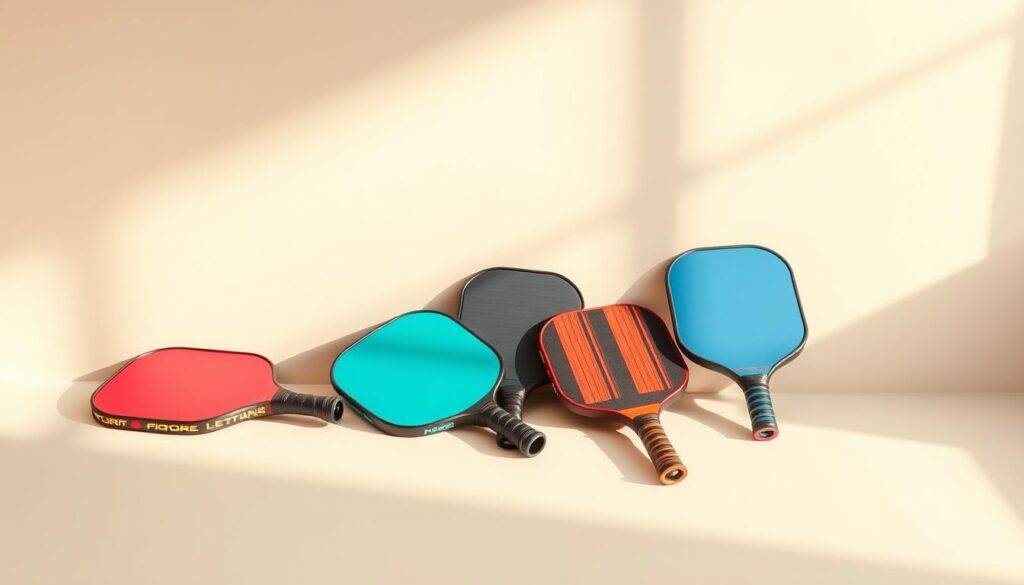
Finding a paddle that’s solid but not expensive makes starting out more fun. Look for paddles with true carbon fiber or fiberglass faces and quality cores. Brands that list materials and testing help you understand durability and performance.
What makes a paddle “affordable but legit”
A good budget paddle avoids cheap materials and fake looks. It should have clear specs on materials, honest weight, and reviews from real testers. Priced between $80 and $150, these paddles offer value without the high cost.
Budget picks that still perform
The 11SIX24 Pegasus Jelly Bean is often under $100. It has a big sweet spot, is forgiving, and offers good spin. The Friday Original also performs well for its price and often comes in deals. Starter packs, like the SLK NEO 2.0, include everything you need to start playing.
When to splurge a little for long-term value
Spending $150–$200 on a mid-tier paddle can be worth it if you play a lot. Foam-core paddles like the CRBN TruFoam Genesis 4 or higher-end options last longer. They keep their feel and offer better resale value when you upgrade.
Begin with a budget paddle like the Friday or 11SIX24 to learn the basics. As you improve, move to a mid-tier foam or control paddle that fits your style. This way, you get the most out of your affordable paddle before investing in a more advanced one.
| Model | Price Range | Core / Face | Strength for Beginners |
|---|---|---|---|
| 11SIX24 Pegasus Jelly Bean | $70–$100 | Polymer core / Fiberglass face | Large sweet spot, forgiving, good spin |
| Friday Original | $50–$100 (often deals) | Polymer core / Carbon-fiber style face | Consistent feel, high value, great starter option |
| SLK NEO 2.0 Set | $80–$130 (set) | Polymer cores / Fiberglass faces | Starter kit value, includes accessories |
| CRBN TruFoam Genesis 4 | $150–$200 | Foam core / Carbon face | Durable, long-lasting performance for frequent players |
| Pickleball Apes Pulse S | $150–$200 | Advanced cores / Reinforced face | Better resale, control-focused, good upgrade option |
How to test paddles before you buy
Trying paddles the right way helps you find the perfect one. Start with a short routine that includes volleys, dinks, and serves. Use the same warm-up for each paddle to compare them fairly.
On-court testing tips
Visit a demo day or a store that lets you play points. Real rallies show how paddles perform better than just tapping the ball.
Test each paddle in multiple short sessions. Your hands need time to adjust. If time is limited, visit more than once or swap paddles during play.
What to pay attention to during a demo
Notice how off-center hits behave. Forgiveness is key for beginners, keeping more shots in play. See if near-miss strikes stay in control or go wild.
Check dwell and feel. Does the ball sit long enough for soft dinks? Foam-core paddles often provide more dwell, aiding touch shots.
Swing weight and speed matter in kitchen exchanges. You want a paddle that lets you react fast at the net. Test fast volleys and quick blocks to see if it feels heavy or light.
Make sure the grip and handle feel right. The circumference should fit your hand, and the handle support a two-handed backhand if needed. A longer handle can help with two-handed strokes.
Compare consistency across shots. A good beginner paddle should help with soft shots and modest putaways. Keep notes on each paddle, rating forgiveness, feel, speed, and comfort.
| Test Step | What to Observe | Why It Matters |
|---|---|---|
| Warm-up routine (volleys, dinks) | Dwell, feel, comfort | Shows touch and control for common beginner shots |
| Play points | Sweet spot consistency, off-center forgiveness | Reveals how paddle performs in real rallies |
| Quick net exchanges | Swing weight, reaction speed | Determines suitability for kitchen play and defense |
| Serves and returns | Power control, placement | Shows balance between power and accuracy |
| Grip and handle check | Fit, length, two-handed comfort | Prevents blisters and supports proper technique |
| Repeat sessions | Consistency over time | Reduces single-session bias and reveals true comfort |
Bring a simple checklist and compare your notes with reviews. This way, you can test paddles before buying with confidence.
Matching paddle shape and size to your beginner needs
Choosing the right paddle shape and size can make your first weeks on the court more enjoyable. The right fit boosts confidence, reduces mishits, and helps you learn consistent strokes. Focus on forgiveness, comfort, and simple control when you start.
Widebody, standard, and elongated shapes
Pickleball paddles come in three common shapes that affect sweet spot, reach, and maneuverability. A widebody paddle increases surface area and gives a larger sweet spot. This extra forgiveness helps beginners avoid errors and stay in rallies.
The standard or square shape balances reach and control. Many entry-level models use this form to keep handling predictable. If you want a straightforward learning curve, a standard paddle often fits the bill.
Elongated paddles trade sweet-spot size for extra reach and potential power. These work best once your shots are consistent. New players who favor reach or who are already athletic may try an elongated shape later.
Handle length and grip circumference considerations
Handle length affects leverage and two-handed strokes. A longer handle supports a two-handed backhand and added reach at the net. The 11SIX24 Pegasus Jelly Bean is one example that offers extra handle length, which can be helpful for two-handed play.
Grip circumference matters for control and comfort. If the grip is too large, wrist motion suffers and precision drops. If it is too small, you may grip too tightly and tire your hand. Test grips during demos and try replacement grips from Wilson or Head if you need a different feel.
| Feature | Beginner Benefit | When to Choose |
|---|---|---|
| Widebody paddle | Larger sweet spot, fewer mishits | If you want forgiveness and easier rallies |
| Standard shape | Balanced control and reach | Best for general learning and most players |
| Elongated shape | Longer reach, more power potential | When you are consistent and want reach |
| Long handle | Better two-handed backhands, more leverage | If you use or plan to use two-handed strokes |
| Proper grip circumference | Improved wrist control and comfort | Choose after testing feel in your hand |
If you are new, favor a widebody paddle or a standard model with a comfortable grip and moderate handle length. These choices keep learning simple and highlight fundamentals while you build skills with pickleball paddles for beginners.
How to choose between control, power, and spin as a beginner
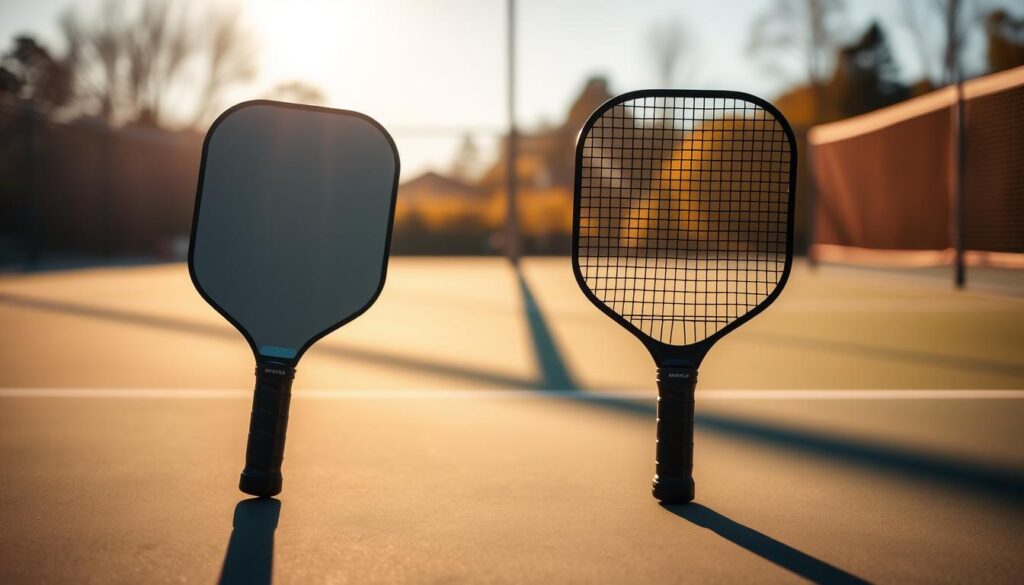
At the start, focus on solid mechanics and shot accuracy. A paddle that offers control and forgiveness is best. It helps you master dinks, resets, and basic volleys without worrying about timing.
Why control and forgiveness should be prioritized
Control cuts down on mistakes and speeds up your growth. Paddles with soft feels and big sweet spots are great for this. They let you keep the rally going and practice consistent hits.
Forgiving paddles also help you focus on strategy and where to place the ball. This lets you build a strong foundation. Later, you can move to more specialized gear.
When to consider more power or spin
Move to power paddles when your technique is solid and you can repeat your swings. Power paddles like Selkirk and Bread & Butter reward good contact but punish bad timing.
Spin paddles are good when you can control the depth and tempo of your shots. Paddles like the Six Zero DBD add variety to your game when you can place the ball accurately.
Start with control-focused paddles that are forgiving. After a few months of playing, try intermediate options. This way, you can see if you prefer more speed, touch, or a balanced feel. When you compare paddles, you’ll know better what suits you long-term.
Recommended shopping budget and trusted brands for beginners
You want a paddle that feels good, lasts, and helps you learn fast. Set a budget that’s realistic so you don’t waste money on bad gear. This guide helps you find a good price and brands for beginners.
Start with a budget of $90 to $150. This range offers quality and durability without the need for expensive tech. Anything under $60 is usually a waste of money.
Look for affordable paddles from brands known for quality. Friday Original and 11SIX24 are great for beginners. Vatic Pro PRISM Flash and Six Zero Double Black Diamond are good for those improving.
Try out demos, use discount codes, and read reviews before buying. Buying from verified sellers ensures a safe purchase and can find deals.
Here’s a quick guide to help you choose based on budget, play style, and brand.
| Price band | Typical features | Recommended models | Why it fits beginners |
|---|---|---|---|
| $60–$89 | Entry cores, basic faces, lighter build | Friday Original (sale), 11SIX24 Pegasus Jelly Bean | Very affordable beginner pickleball paddles that offer large sweet spots and forgiving play at a low cost |
| $90–$150 | Polymer or advanced foam cores, better faces, durable grips | Vatic Pro PRISM Flash, Six Zero Double Black Diamond, CRBN TruFoam Genesis 4 | Recommended budget range for balanced performance, durability, and long-term value |
| $150+ | Advanced materials, tailored balance, pro-level spin/power | Selkirk models, JOOLA higher tiers, Bread & Butter options | Good if you commit to frequent play and want a paddle that grows with your skill |
Beginner pickleball paddle reviews: how to read reviews and compare models
When looking at beginner pickleball paddle reviews, focus on real play tests, not just specs. Look for reviews that test dinks, volleys, third-shot drops, serves, and returns. Reviews that only list weight and material don’t tell you much about how it feels on the court.
Check for swing weight, sweet spot notes, core type, face material, and any durability issues like delamination. A reviewer who talks about mishits and kitchen play offers practical tips for new players. Look for ratings that talk about control, forgiveness, and spin.
Next, learn to read paddle reviews by looking at the tester’s background. A pro who likes power might praise paddles that feel harsh to beginners. Choose reviews written for recreational players or that test beginner-friendly shots.
Compare pickleball paddles by looking for head-to-head comparisons at similar prices. Good reviews will compare a model to common alternatives like Selkirk, Paddletek, or Engage. This shows how it compares in forgiveness and sweet spot size.
Use many sources when deciding. Mix expert sites, retailer demo notes, and user feedback to find common praises or complaints. Consistent praise for comfort or repeated complaints about paint chipping should guide your choice.
Try a demo if you can. Demo data offers more than just words. If demos aren’t available, rely on multiple reviewers who tested the paddles on court, not just on a bench.
Watch for agreement on forgiveness, sweet spot, and long-term durability. These traits are key for learning and building confidence. Reviews that list discount codes or tested pricing notes can help you find better deals.
When comparing pickleball paddles, value quantified scores and real testing notes more. Look for reports that rate control, forgiveness, and mishit behavior. This makes it easier to find a paddle that matches your early goals and skill level.
Conclusion
When you start, focus on forgiveness, control, comfort, and durability. Look for paddles like the Friday Original, 11SIX24 Pegasus Jelly Bean, or Vatic Pro PRISM Flash. These paddles are great for beginners because they have a big sweet spot, a comfy grip, and a consistent feel.
Stay away from the cheapest paddles under $60. Instead, look for ones in the $90–$150 range. This price offers a good mix of quality and value. Always test paddles on the court and read reviews before buying.
Choose a paddle that’s forgiving and stick with it to improve your skills. As you get better, you can switch to paddles with more control or power. Use the article’s comparisons and demo checklist to find the right paddle for you.
